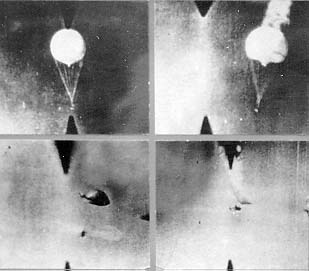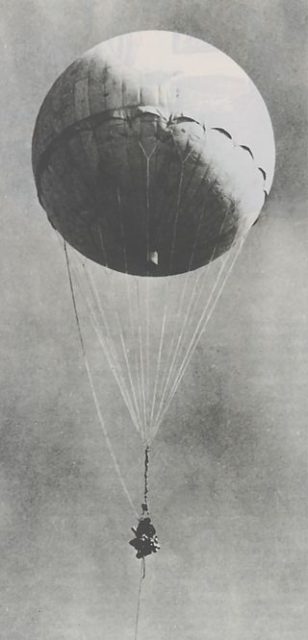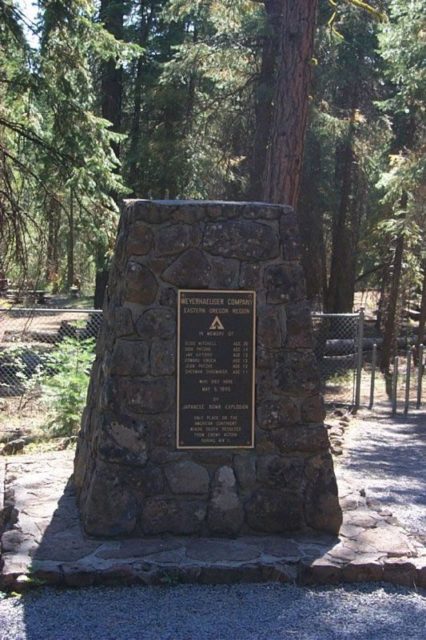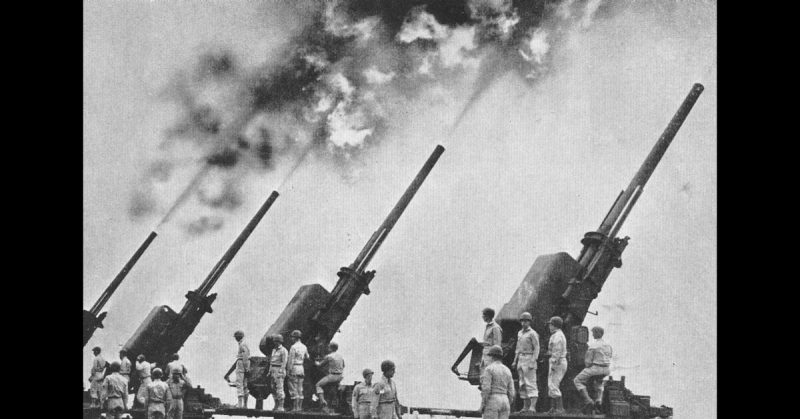When people think about Japanese warfare during WWII, they usually envisage kamikaze pilots or the horrific conditions of their POW camps. However, there was one fascinating type of Japanese weapon, and a separate kind of warfare all on its own, which people either forget or have never heard of. It was called the Fu-Go, also known as the fire balloon.
So, What Was It?
The fire balloon was an enormous hydrogen balloon loaded with a variety of explosives, from small to larger bombs. It was cheap for the Japanese to produce and they believed the sturdy balloons could float across the Pacific, all the way to the West Coast of the United States and Canada. They would then drop and explode.
Today the idea seems slightly ludicrous, but it is important to remember these were no ordinary balloons and, during their time, they were the first weapon capable of intercontinental range. However, the balloons were not very effective.

Between late 1944 and early 1945, the Japanese sent out more than 9,000 fire balloons. Only a few hundred made it to their destination and were recorded as being found; the Japanese had hoped about 1,000 would make it. One that did, caused six deaths.
There were two different types of fire balloons, the Type B, and the bomb-carrying. Type B were made from rubberized silk and were used to test the theory of balloons making it from Japan to the West Coast. The bomb-carrying type was a little over 30 feet wide and held an enormous amount of hydrogen.
They were found in almost every state in the American West, making it surprisingly as far east as Michigan. They also found their way to Mexico and Canada. Due to their ineffectiveness, the Japanese felt the effort was not worth their time or resources.
The Allies Respond
Even though the balloons did little damage, the Allies did not want them around. There was a growing fear the Japanese would not only use the balloons to carry bombs, but also biological weapons.
As far as the public knew, the balloons were being launched from submarines off American shores. Others thought that maybe the balloons were being sent from concentration camps within the United States. Most people, as you would suspect, did not believe they could have made it all the way from Japan, across the Pacific, to the middle of the United States.
The US Army figured out the balloons were coming from Japan, by studying the sandbags in them. They were able to determine the sand could have originated nowhere else other than Japan.

The largest threat the balloons posed to the United States was psychological damage, as the eerie orbs appeared in the sky with the possible potential of creating fire damage and destruction.
There was no press coverage as the US Office of Censorship contacted the media telling them not to report the balloons or any damage caused by them. They did not want American citizens to panic, and they also did not want the Japanese to think their balloons were successful. The Japanese only heard of one balloon’s success, which may have led them to stop the project altogether. The US did allow the media to report on the few deaths that occurred due to the balloons, as they did not want anyone else to die.

Fire Balloons and the Public
Elsie Winters Mitchell and her five children were the only people to die due to the fire balloons. Their deaths occurred in May 1945, when they found one that had landed in Oregon. Elsie, her husband, and their children had driven to Gearhart Mountain to enjoy the outdoors, when they made a stop outside Bly, Ore. The six stumbled upon the balloon while the husband was still in the car, causing two explosions when the balloon bomb was kicked. Four of the children died immediately, Elsie died after catching fire, and one of the children survived but died of her wounds later.
Theirs were the only deaths after America became involved in WWII to occur due to enemy action within the contiguous US.
The US Army investigated the site and discovered the bomb had been in its spot for several weeks before the family, unfortunately, discovered it. A memorial to the family has been placed at the site with Japanese cherry trees planted around it, as a gesture of peace.
Remains of the balloons were found throughout the United States as late as 1978, and in Canada in 2014. A complete balloon has been preserved in Canada and can be seen at the country’s war museum in Ottawa
The video below has contains dramatic footage of guns firing on the balloons, as well as footage of WW2 helicopters, the destroyed city of Nuremberg, and of the Atomic bomb strike which ended the war.
